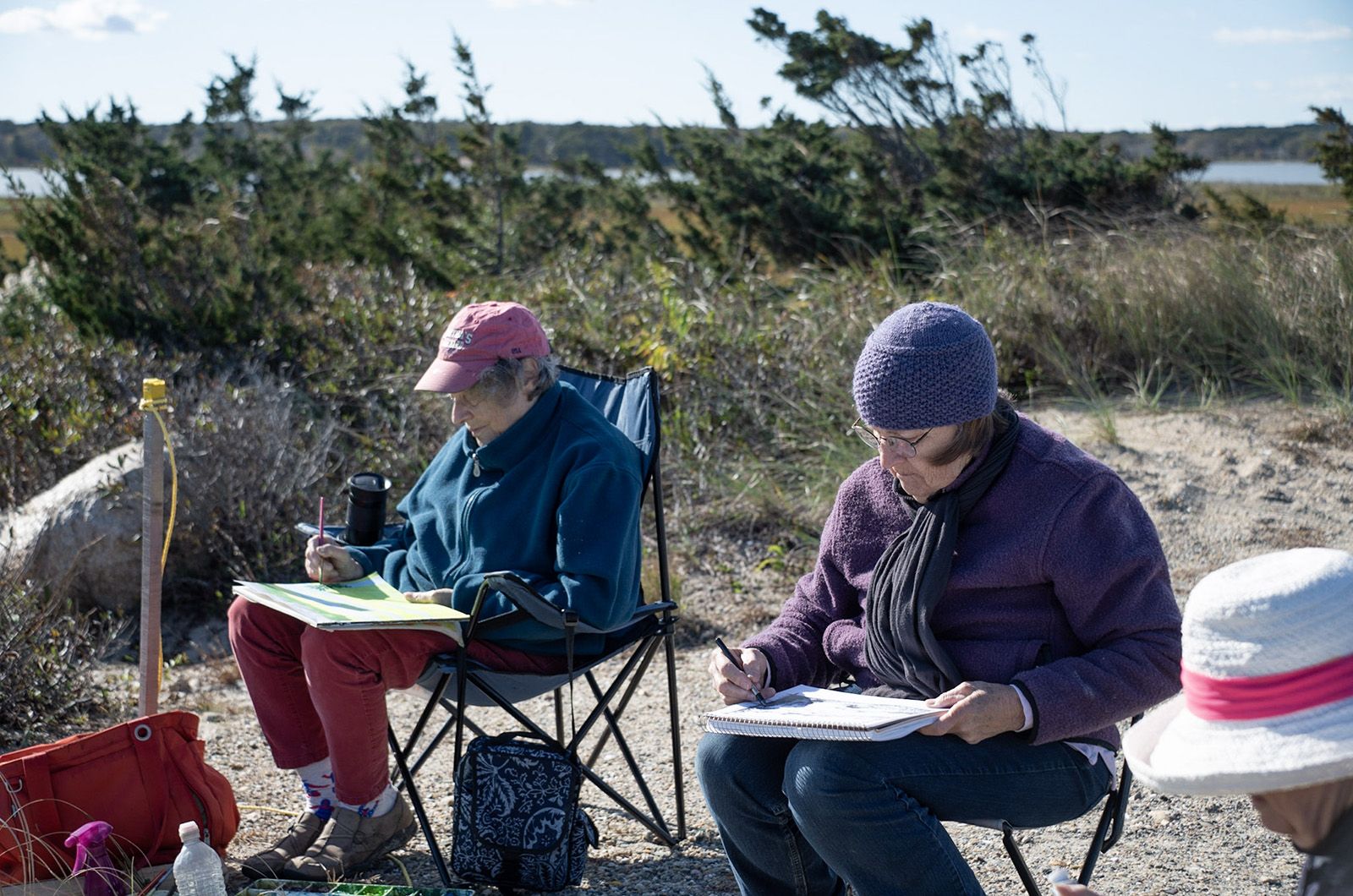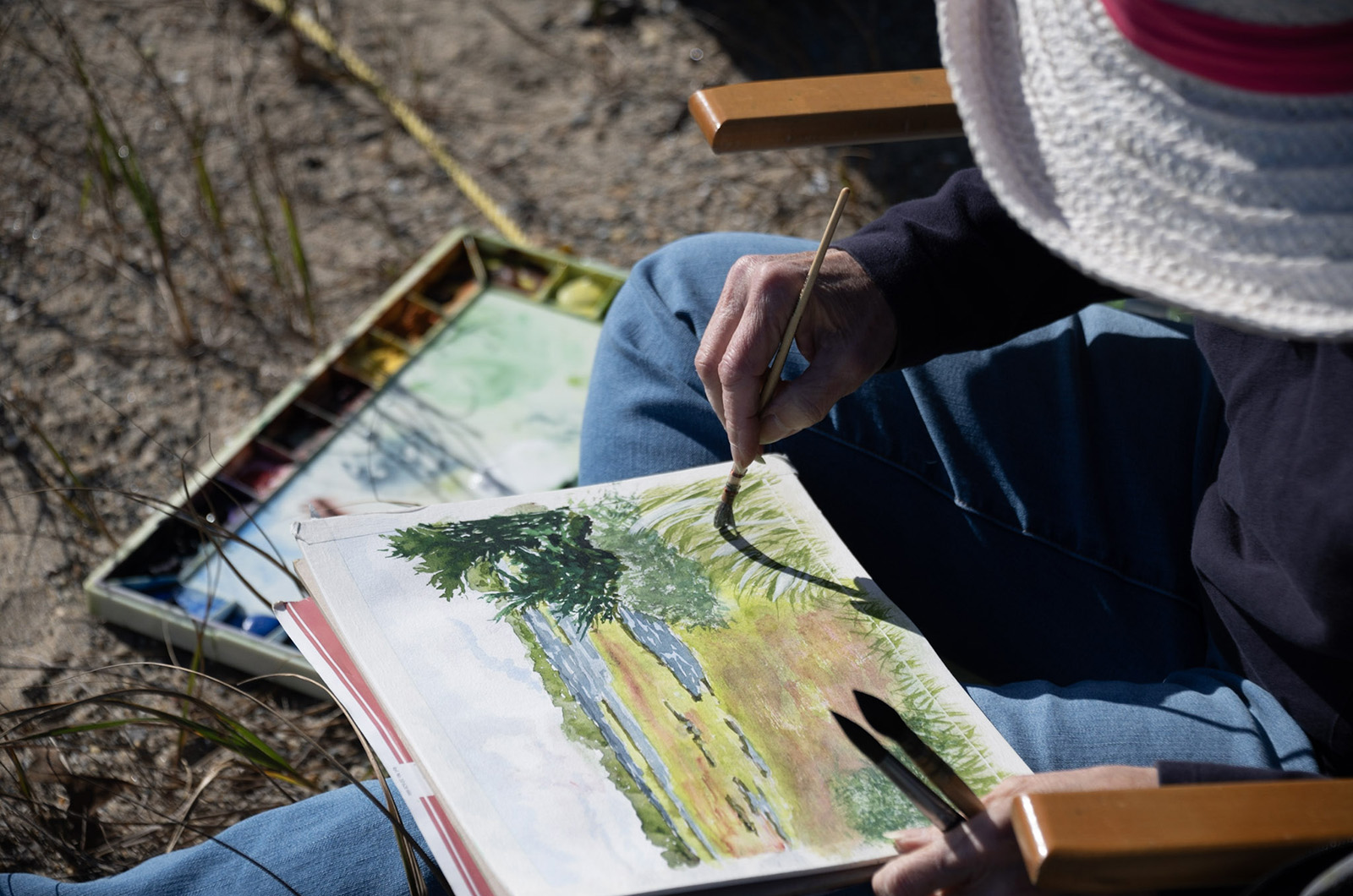On a recent chilly afternoon, three women tucked themselves into beach chairs overlooking Sengekontacket Pond and got to work. They had already cased the area, walking a narrow path to the water’s edge but decided it was too muddy down there.
They climbed back up the path, found a drier spot, set out their chairs in a relatively straight line where they were mostly protected from the wind, put on warm hats and extra layers, and then unpacked their tool kits.
Such is the life of a plein air painter. Or as artist Lynn Hoeft defined the activity: “Three ridiculous people out in the cold doing something.”
The women — Ms. Hoeft, Chris Pettit and Aline Wolff — have been painting together once a week for the last five years. They paint mostly in silence for a few hours and then at the end of the session throw their work on the ground for inspection and encouragement.
“We met in Lynn’s painting class that she teaches at Featherstone,” Ms. Pettit said, looking up from her watercolor. “We decided we wanted to keep painting together outside of a class and have been doing it ever since.”
Whereas Ms. Hoeft and Ms. Pettit mainly work in watercolor, Ms. Wolff specializes in gouache.
“Watercolor is too precise and I have trouble following rules,” she said. “Gouache gives me the beauty of watercolor and the ease of acrylic.”
Painting outdoors, the very definition of plein air painting, has a seasonal shift. Ragweed season is no picnic, Ms. Pettit said. And being able to identify poison ivy is key.
In deep winter, the women move to a hoop house but otherwise, unless it rains, which is particularly bad for watercolor painting, they move around the Island, looking for new and old landscapes to draw.
“No place looks the same twice,” Ms. Pettit said.
It doesn’t even look the same from moment to moment.
Ms. Pettit pointed to the horizon. “You make a commitment,” she said, referring to how she chooses when to capture what is in front of her depending on how the light looks. “But nature doesn’t commit,” she adds.
Clouds move, the sun shifts its gaze, the water and trees reflect everything.
On this particular day, Ms. Hoeft had chosen to work on an illustration with a graphite pencil.
“I got cold,” she said of her choice, her fingers not up to the more delicate challenge that day of watercolor.
The women sometimes finish their paintings in one sitting, and other times continue at a later time. In any case, they all agree that the finished product is not the end goal.
“It’s the act of making it,” Ms. Hoeft said.
And who you make it with. Painting each week adds up quickly and they all have large collections of work by the end of the year.
“Looking at the paintings at the end of the season you get something out of that,” Ms. Hoeft said. “It is the memory of being in that place, at that time, with those people, that counts.”
Ms. Wolff agreed, gesturing toward her fellow painters. “I know them, I appreciate them, I love them. All of those good things.”









Comments (1)
Comments
Comment policy »